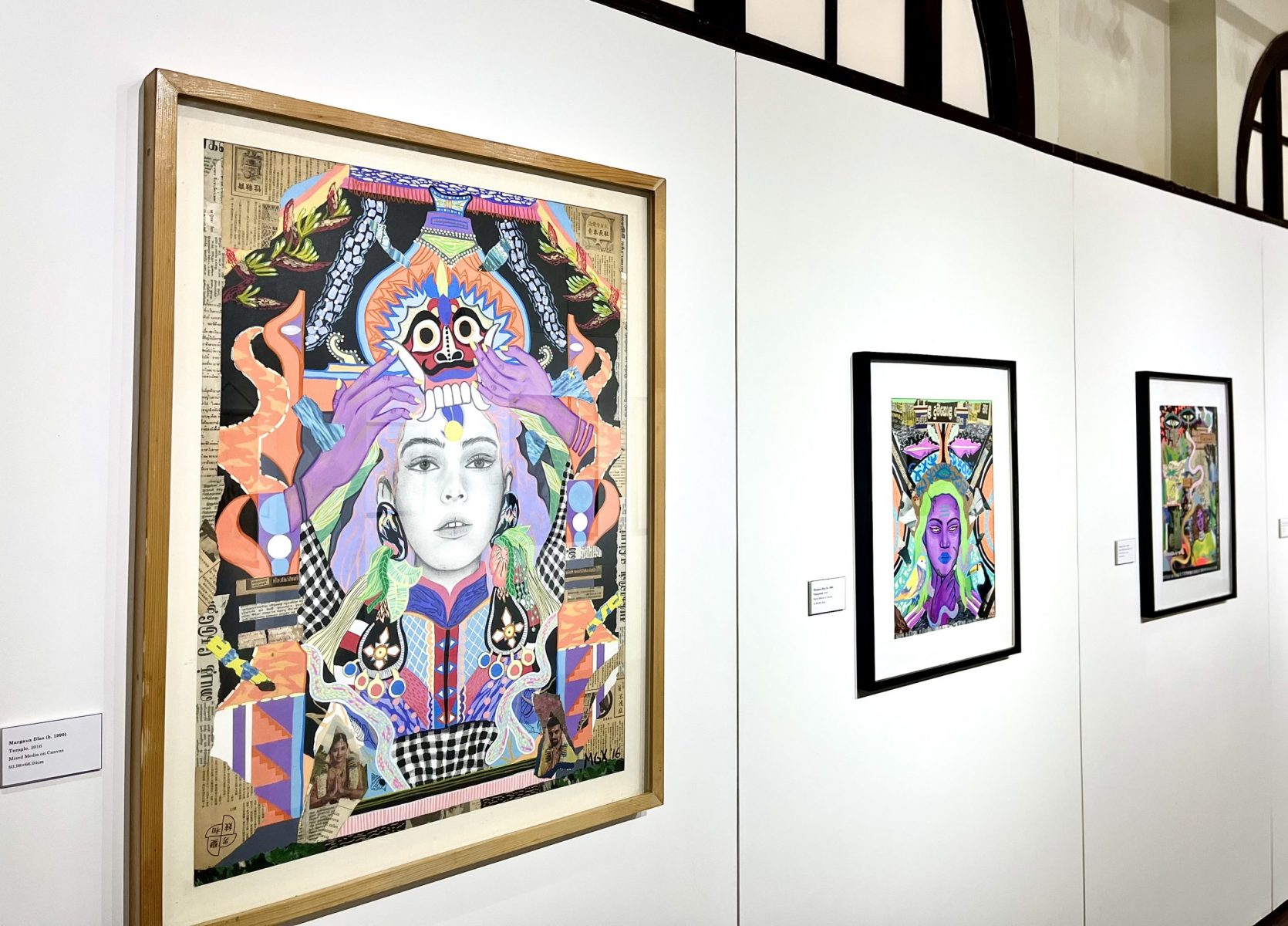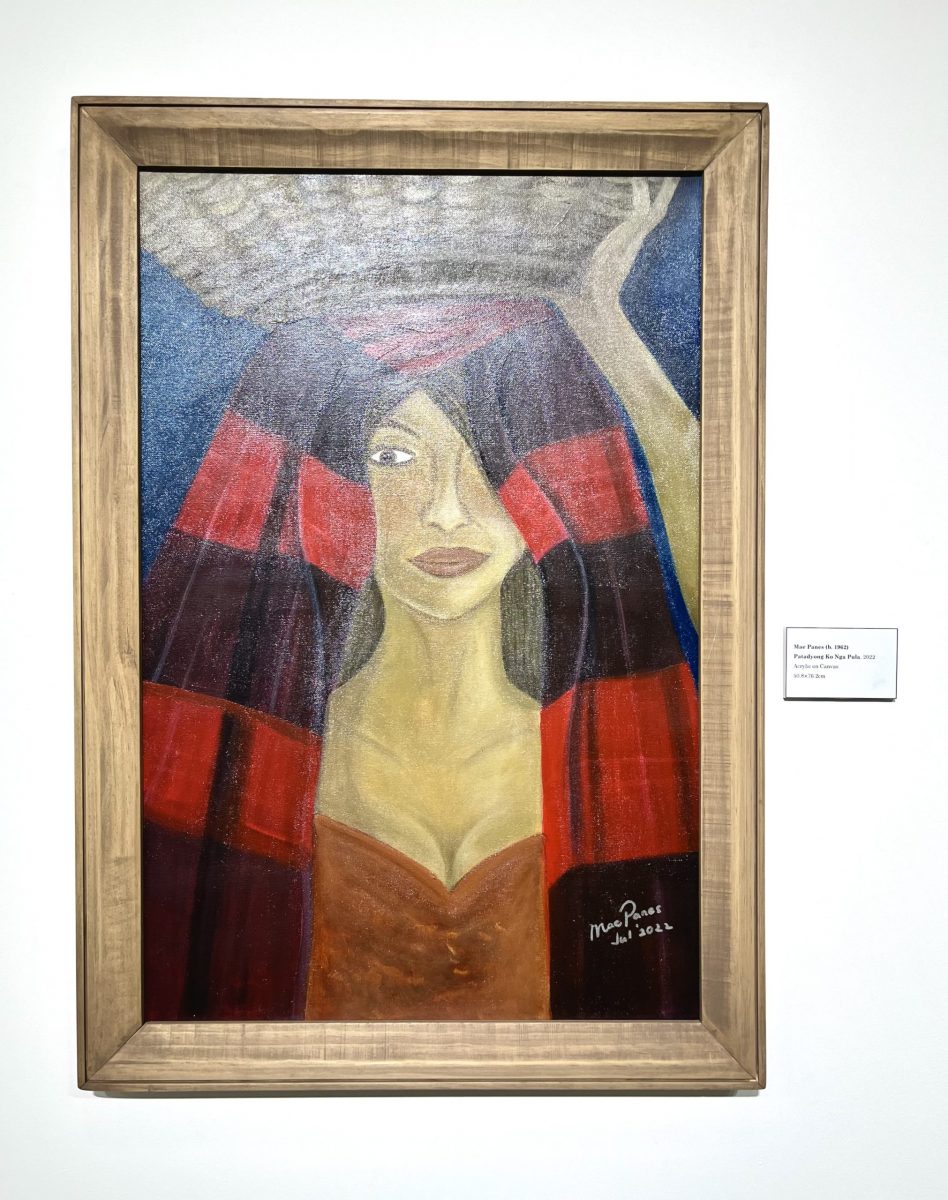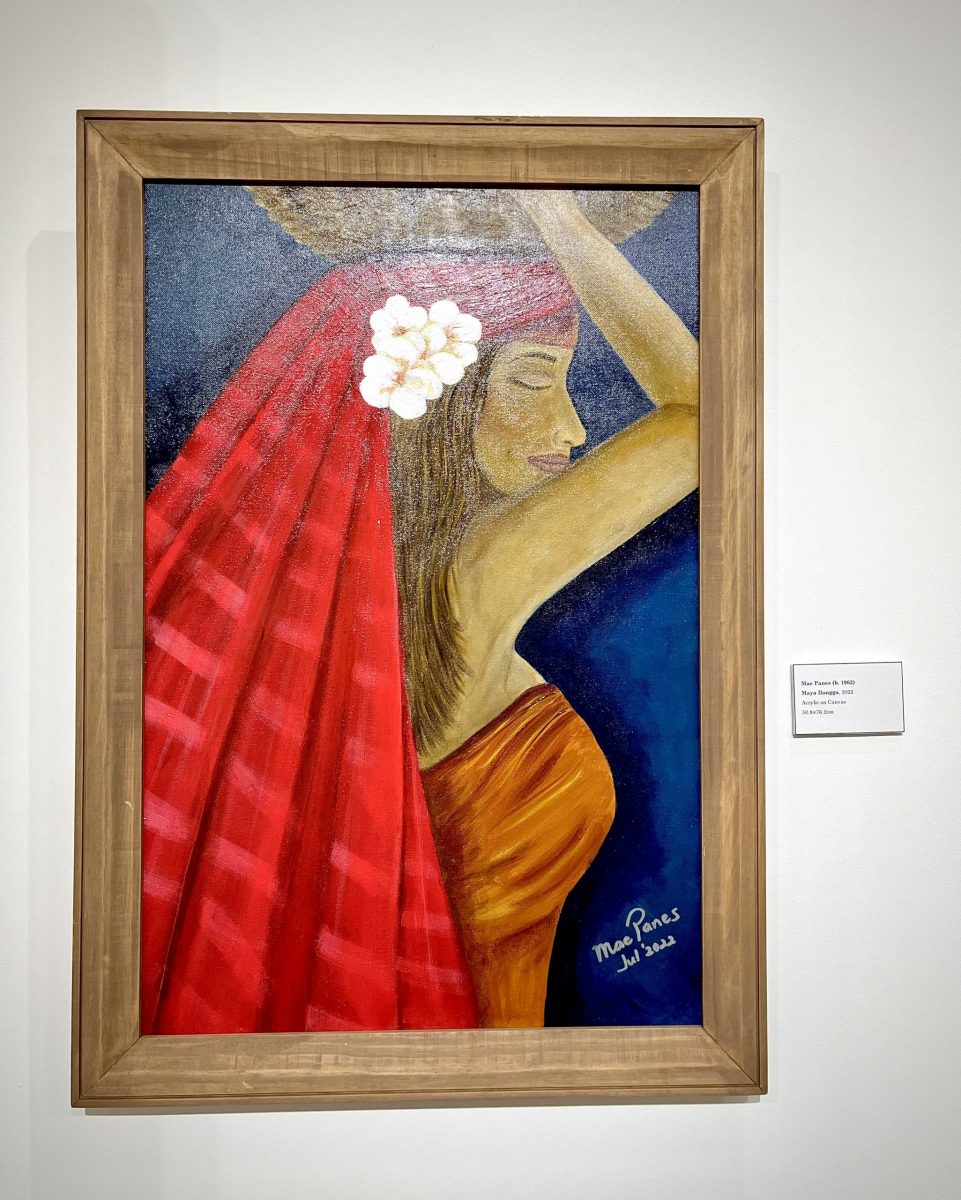The Continuing Spirit shows the works of Alfredo Esquillo at the Ambeth R. Ocampo Gallery, 3rd Floor, Ateneo de Manila Art Gallery. The text is written by Tessa Maria Guazon and the exhibit is curated by Renato Habulan.
The exhibit is a 25-year retrospective on Esquillo which presents 37 of his major works that highlighted his aesthetic milestones.

The seeing body figures prominently in Alfredo Esquillo’s art. It is metaphor for answering a call to walk the journey of faith. For the artist, the path is firmly grounded in the materialities of the world and the rebukes of history.
Trails of devoted pursuit are embodied by this retrospective exhibition. The pathways that define Alfredo Esquillo’s practice are represented through a vernacular atmosphere of objects and forms conjured through densities of pictorial space, and rendered in a range of chromatic palettes and perspectival views. These visual devices not only aid a manner of picturing but also infer a way of understanding. To see is to speak and hear, to understand, or even divine oracles. Figuration simultaneously becomes stage for sight, as well as vehicle for insight.
The potent image in this pilgrim’s gift: it is an object imbued with power to intervene in the world. Whether salve or thorn, the artist transforms it into a vehicle of intercession, to simultaneously make sense of mishap and folly, and divine or perhaps, remedy the wrongs of the world. These compelling images move us through vision and more important, move through us by way of understanding.
We encounter scenes of faith, whether in throngs of devotees crowding plazas and streets, or lone figures encased within or framed by niches. An atmosphere of seeking in implored as figures who crowd the scene lose their way in labyrinthine paths, become distracted by prophets and their visions, or perish in their attempts to grasp faith.
These make for a bewildering world and an arduous journey. Esquillo’s tableaus are distinctly vernacular with pictorial space densely filled with symbols and icons that frame scenes unfolding before us. We intuit an articulation of an inner self lodged within an outer world, a theme that widely permeates his body of works.
The artist found archival photos in libraries while living in Los Angeles, USA. They became the subject matter of a series of works. He painted images in sepia to conjure times gone by. He paradoxically enlivened the past by rendering his figures deathly or deathlike: monstrous, grotesque, or unseeing if in groups; with the vacant and sinister gazes. At the core of this series is an attempt to grapple with history. Esquillo ponders benevolent assimilation that is fatal love, and the legacies of American Colonial rule.
Esquillo also experimented with materials by referencing traditional forms and techniques. He cut his canvas ground into strips so they appear like woven mats. The figures became fragmented into pixels. The image is mediated through play with material, allowing form to speak eloquently.
Narratives are structured through figures in space. There is apparent location that is domicile, both rendered as image and embodied by objects. They include the everyday spaces of a kitchen or a carriage, Plaza Miranda that is Mang Lauro’s domain, lands of tribulation, and the interior niches of crafted objects and tabernacles.
In them, the artist deftly contrasts the divine and the worldly; the pressing materiality of daily life, its temptations and lures, and the struggle of the spirit through fraying flesh. They are palpable yet dreamlike, evoking worlds that are near and realms that are far.
Continuing Spirit will be on show until January 20, 2019. Visit the Ateneo Art Gallery on Facebook at https://www.facebook.com/ateneoartgallery/ or its website at http://www.ateneo.edu/ateneo-art-gallery. You can also find Alfredo Esquillo on Facebook.


